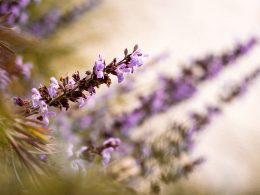Carnivorous plants are some of the most fascinating and unique organisms on the planet. These plants have evolved to capture and digest insects and other small animals in order to supplement their nutrient intake. While they may seem like something out of a science fiction novel, carnivorous plants are very real and can be found all over the world. In this article, we will take a journey through the world of carnivorous plants and explore their savage beauty.
What are Carnivorous Plants?
Carnivorous plants are plants that have adapted to grow in environments where the soil is poor in nutrients. In order to supplement their nutrient intake, these plants have evolved to capture and digest insects and other small animals. There are over 600 species of carnivorous plants, and they can be found on every continent except Antarctica.
Types of Carnivorous Plants
There are several different types of carnivorous plants, each with their own unique adaptations for capturing prey. Some of the most common types of carnivorous plants include:
1. Venus Flytrap – The Venus Flytrap is perhaps the most well-known carnivorous plant. It has two modified leaves that snap shut when triggered by an insect. The plant then secretes digestive enzymes to break down the insect.
2. Pitcher Plant – Pitcher plants have a deep, slippery cavity filled with digestive enzymes. Insects are attracted to the plant by its sweet nectar, but once they enter the cavity, they are unable to escape.
3. Sundew – Sundews have sticky, glandular hairs on their leaves that trap insects. Once an insect is caught, the plant curls its leaves around the insect and secretes digestive enzymes.
4. Bladderwort – Bladderworts have small, bladder-like structures that suck in and trap small aquatic animals.
The Savage Beauty of Carnivorous Plants
While the idea of a plant eating insects may seem gruesome, there is a certain savage beauty to carnivorous plants. These plants have evolved to survive in some of the harshest environments on the planet, and their adaptations are truly remarkable.
One of the most striking things about carnivorous plants is their appearance. Many carnivorous plants have brightly colored leaves or flowers that are designed to attract insects. The Venus Flytrap, for example, has bright red leaves that are highly visible to insects.
Another fascinating aspect of carnivorous plants is their ability to move. The Venus Flytrap’s leaves can snap shut in just 0.1 seconds, making it one of the fastest moving plants in the world. Pitcher plants are also able to move, with some species able to change the angle of their leaves to better capture prey.
Carnivorous plants also have a unique relationship with their environment. Many carnivorous plants grow in bogs or other wetland environments, which are often inhospitable to other plants. By capturing insects and other small animals, carnivorous plants are able to survive in these harsh environments.
Conclusion
Carnivorous plants are some of the most fascinating and unique organisms on the planet. Their savage beauty and remarkable adaptations have captured the imaginations of scientists and nature enthusiasts for centuries. Whether you are a botanist, a nature lover, or simply someone who appreciates the beauty of the natural world, carnivorous plants are sure to leave you in awe.












